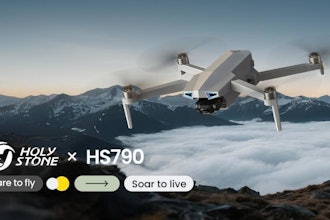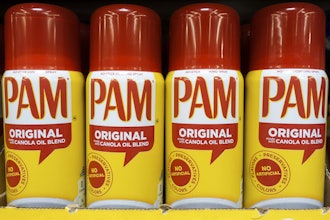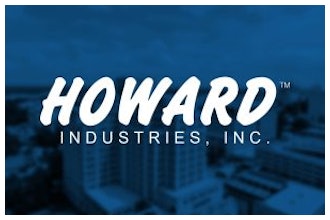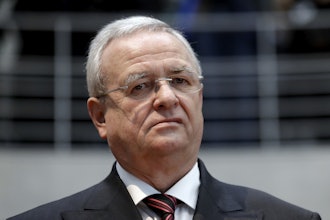Brand owners looking to get ahead know that every little improvement can affect the bottom line. As they face increasingly global competition, an ever-growing diversity of products and shorter product runs, they are increasingly looking to the dexterity of robotic solutions as a way to be more nimble and responsive to shifting market demand.
Through flexibility and automation, robotic technology can enhance efficiency and boost productivity. Attendees at PACK EXPO Las Vegas 2011 (September 26-28; Las Vegas Convention Center) will find a wide range of robotics innovations to choose from when selecting the right solution for their particular operational challenges. The examples below are just a snapshot of what brand owners will find.
The More Things Change: The Benefits of Flexibility
As consumer demand for new and unique packaging sizes, shapes, and configurations continues to grow, packaging lines must become more flexible. Robotic automation enables the quick and easy changeover needed to switch between product configurations.
EPSON Robots will introduce its new RS4 model, a “zero footprint robot” that features an expanded work envelope over earlier models. |
For example, EPSON Robots (Carson, CA; Booth #258), a provider of Selective Compliant Assembly Robot Arm (SCARA) robots, will introduce its new RS4 model, a “zero-footprint robot” that features an expanded work envelope.
“Unique to the EPSON RS4 arm is our new workspace design, which maximizes work envelope usage,” says Michael Ferrara, director, EPSON Robots. “The arm structure utilizes the entire workspace underneath the arm, defeating the ‘old’ SCARA design limitations so there is no dead space in the center of the work envelope.”
The unique work envelope allows for greater design flexibility, with over 360 degrees of axis rotation and omni-directional access that make the robot ideal to process heavy applications where large quantities of parts are presented to process or testing stations.
The 550mm SCARA arm is capable of working on pallets as large as 778mm x 778mm, and has the ability to maneuver under itself for the shortest possible movements, enabling higher speeds and throughputs. Easy integration into compact assembly cells also reduces the footprint and allows for a greater variety of line configurations.
At PACK EXPO Las Vegas 2011, C&D Skilled Robotics, Inc. will spotlight its SKILLED 504 SCARA robot, which features four interpolated axes with a 360 degree working area and the flexibility handle a variety of product types allowing manufactures to shift usage among a variety of different applications. |
Likewise, C&D Skilled Robotics, Inc. (Beaumont, TX; Booth #5209) offers a number of palletizing robots that combine with laser-guided vehicles to provide end-of-line automation, emphasizing flexibility in product flow configurations. C&D’s systems automate the transport of products from separate production lines to a storage or trucking area. On display at PACK EXPO Las Vegas 2011 will be the SKILLED 504 SCARA robot, which features four interpolated axes with a 360-degree working area. A three-column design allows for more efficient movements and a better use of space, according to Robert Sanders, sales manager, C&D Skilled Robotics. The SKILLED 504 is designed to handle a variety of product types, including cardboard boxes, bundles, shrink-wrapped trays, bags and reels, allowing brand owners to shift usage among a variety of different applications.
Additionally, the ability to use a laser-guided system provides increased flexibility in the production layout of the factory floor. Sanders notes that older systems required extensive and permanent or semi-permanent installations on the floor to guide the vehicles for product transport. C&D’s laser-guided vehicles enable brand owners to expand capacity and increase volume as needed and change product paths just by altering the computer programs that guide the system.
A three-column design allows for more efficient movements and a better use of space, according to Robert Sanders, sales manager, C&D Skilled Robotics: “In the lifespan of any manufacturing process, you’re going to eventually want to add or change paths. The flexibility of our system enables our customers to account for capacity increases with ease and avoids the downtime, changeparts and maintenance associated with conveyor systems.”
Bosch Packaging Technology, Inc. (New Richmond, WI; Booth #1423) has a range of robotic packaging applications that highlight different flexibility features: a variety of Delta arm placements within a robotic cell (1-4 arms in a single cell), multiple cells for larger applications, and control solutions that manage pick-and-place strategies between multiple robotic cell arrangements. Specific robotic applications that Bosch specializes in include primary feed placing solutions that feed into wrapper flights or thermoforming machines; top-loading for tri-seal cartons, trays and cases; and bucket loading for end load cartoning applications.
Bosch marketing manager Paul Garms focuses on the simulation capabilities of Bosch’s technology. “Our simulation gives us the ability to determine the number of arms required specific to an application using actual speeds, accelerations, and trajectories to determine rates,” he says. Additionally, he cites Bosch’s custom -designed end effectors, which are tailored to each application, maximizing picking capabilities and control for various products.
At PACK EXPO Las Vegas 2011, Bosch will display a single arm frame with Delta robotics technology and an integrated flow wrapper. Software controlling the Delta Arm features visualization of production and simulation capabilities. The simulation features support cost optimization and allow Bosch to recommend more accurate arm count per application.
“The benefits of robotics in packaging are a return-on-investment in terms of months, not years, and higher efficiency in the lines,” Garms says.
More Bang for the Buck: Enhancing Productivity and Lowering Labor Costs
Automating a packaging process with robotics offers greater speed, accuracy and capacity than the comparable manual processes it tends to replace – and many robotics providers claim that the return-on-investment over time justifies the switch. Adding a robotics component can help minimize labor costs, increase throughput and enable round-the-clock operations, making more productive use of packaging line assets that might otherwise sit idle.
FANUC Robotics America, Inc.’s new M-3iA intelligent, parallel-link robot is designed for small part handling and picking applications and boasts an increased payload and work envelope compared to the company’s smaller M-1iA robot, offering packagers greater throughput and capacity. |
Indeed, FANUC Robotics America, Inc. (Rochster Hills, MI; Booth #4238) will feature its new M-3iA, an intelligent, parallel-link robot designed for small part handling and picking applications. The robot boasts an increased payload and work envelope compared to the company’s smaller M-1iA robot, offering packagers greater throughput and capacity. Available in a four- or six-axis model, the M-3iA offers the same parallel-link structure as the previous model, and accommodates payloads up to 6kg.
Dick Motley, packaging manager, National Distribution Network, FANUC, notes the multiple benefits of robotizing a manufacturing process, ranging from labor savings, capacity improvement and even energy efficiency. Commenting on a recent installation that automated a cooking line, he notes, “Labor savings were just the tip of the iceberg. We achieved an 80 percent capacity improvement and higher utilization of the ovens whereas the earlier arrangement was wasting heat and energy because the manual input was so slow.”
Motley explains that robots can increase speed and up capacity and get more use out of existing assets, which in turn can enhance energy efficiency. For example, the process of manually placing bread into an oven can only go at “human speed,” which means the oven door stays open longer, and more heat escapes. Using robotics for the same job moves the bread more quickly, so the heat stays in the oven instead of ‘cooking’ the air.”
FANUC’s integrated iRVision’s Snap-in-Motion software, which guides vision systems that support pick-and-place movements, also supports the drive towards higher speeds. Typical vision systems have stationary cameras that require the robot to stop to take a picture, increasing cycle time. The Snap-in-Motion feature of iRVision allows the robot to move the camera over a work area, and snap and locate parts without stopping, helping to reduce cycle times.
ABB, Inc.’s IRB 360 FlexPicker features a 35% smaller footprint, 30-60% faster throughput and a 50% higher payload than previous models. |
ABB, Inc. (Aurbern Hills, MI; Booth #4221) will highlight its IRB 360 FlexPicker, which, according to Joe Campbell, vice president of the ABB Robot Products Group in the United States, is the industry’s first “second generation” delta robot. Attempting to meet the demand for higher productivity, the new robot features a 35 percent smaller footprint, 30–60 percent faster throughput and a 50 percent higher payload than previous models.
Campbell notes that “all robots save on labor, or move people from less rewarding, repetitive jobs into jobs with more growth potential and rewards. In addition to savings on labor, there have been recent movements in production facilities to save on space.”
He cites the IRC5 Compact controller, an integral part of the IRB FlexPicker, as a key feature enabling higher speeds and precision. The controller is designed to track fast-moving conveyor belts with high accuracy as well as facilitate smarter, leaner robot cells designs and better control of production lines.
Campbell also says that an Indexed Conveyor Tracking software feature allows the IRB 360 to accurately follow the motion of an indexing conveyor at rates up to 450 indexes per minute. Designed to reduce the cost and complexity of high speed carton loading applications, it allows the IRB 360 to track many other indexing packaging machine infeeds during the complete index motion, improving system throughput up to 50 percent.
For more information about PACK EXPO Las Vegas 2011 or to register, visit www.packexpo.com or contact PMMI’s Show Department at (703) 243-8555 or [email protected]. PMMI is a trade association with more than 560 member companies that manufacture packaging, processing and related converting machinery, commercially-available packaging machinery components, containers and materials in the United States and Canada. PMMI’s vision is to be the leading global resource for packaging, and its mission is to improve and promote members' abilities to meet the needs of their customers. PMMI organizes the PACK EXPO trade shows: PACK EXPO International, PACK EXPO Las Vegas and EXPO PACK México, connecting packaging and processing equipment and materials suppliers with their customers around the world. Coming in 2010: EXPO PACK México in Mexico City, June 22–25, and PACK EXPO International, Oct. 31–Nov. 3, at Chicago’s McCormick Place. PACK EXPO Las Vegas returns to the Las Vegas Convention Center Sept. 26–28, 2011. Learn more about PMMI and the PACK EXPO trade shows at PMMI.org and Packexpo.com.






















